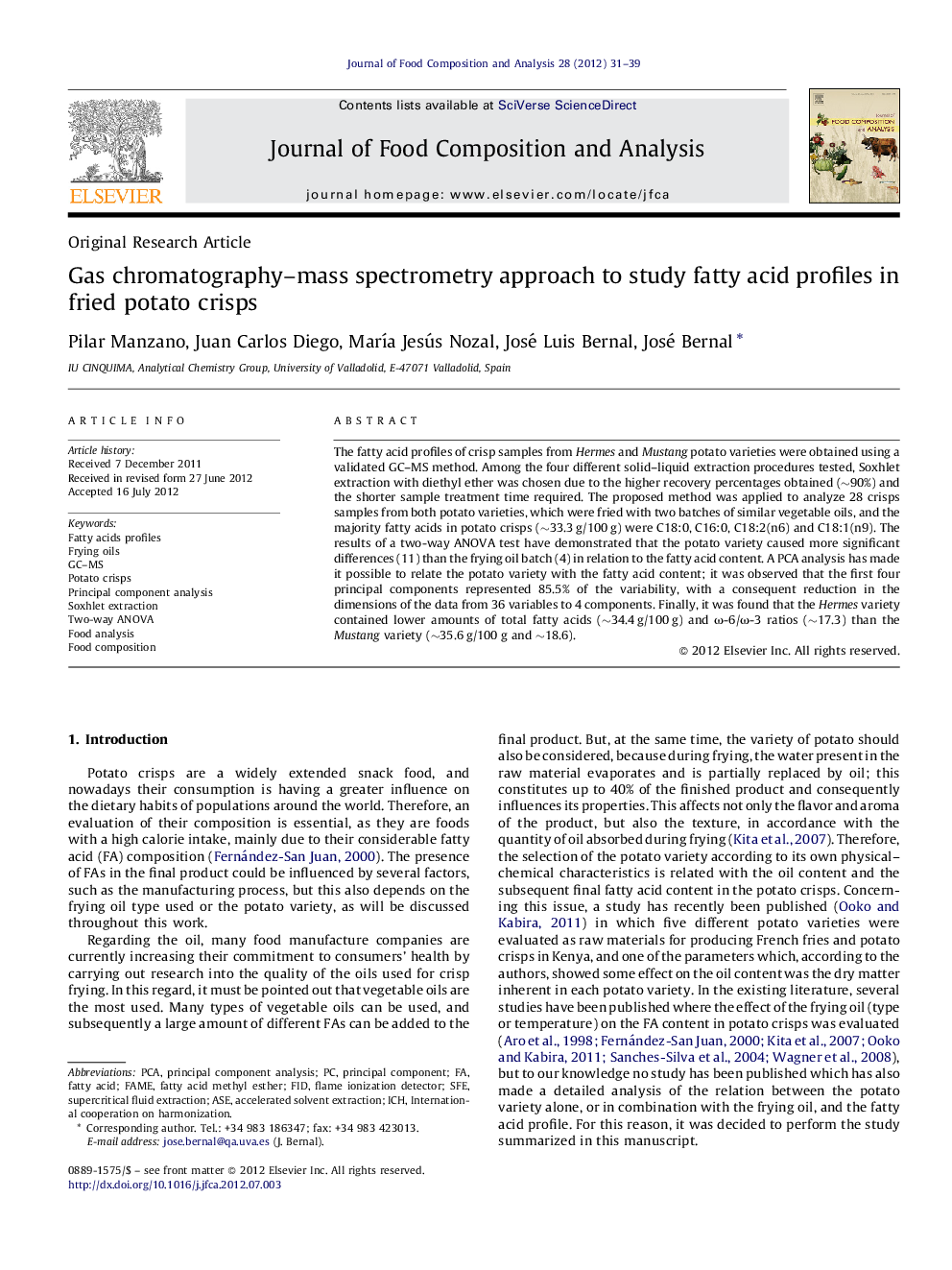| Article ID | Journal | Published Year | Pages | File Type |
|---|---|---|---|---|
| 1218387 | Journal of Food Composition and Analysis | 2012 | 9 Pages |
The fatty acid profiles of crisp samples from Hermes and Mustang potato varieties were obtained using a validated GC–MS method. Among the four different solid–liquid extraction procedures tested, Soxhlet extraction with diethyl ether was chosen due to the higher recovery percentages obtained (∼90%) and the shorter sample treatment time required. The proposed method was applied to analyze 28 crisps samples from both potato varieties, which were fried with two batches of similar vegetable oils, and the majority fatty acids in potato crisps (∼33.3 g/100 g) were C18:0, C16:0, C18:2(n6) and C18:1(n9). The results of a two-way ANOVA test have demonstrated that the potato variety caused more significant differences (11) than the frying oil batch (4) in relation to the fatty acid content. A PCA analysis has made it possible to relate the potato variety with the fatty acid content; it was observed that the first four principal components represented 85.5% of the variability, with a consequent reduction in the dimensions of the data from 36 variables to 4 components. Finally, it was found that the Hermes variety contained lower amounts of total fatty acids (∼34.4 g/100 g) and ω-6/ω-3 ratios (∼17.3) than the Mustang variety (∼35.6 g/100 g and ∼18.6).
► Fatty acid profiles were obtained for commercial potato crisp samples by GC–MS. ► Soxhlet extraction with diethyl ether provided the best results. ► Mustang and Hermes potato varieties fried with 2 different oils were studied. ► Profile differences regarding to the potato variety were found.
